Another tulip shortage in the Netherlands
I just got a press release from DeVroomen Garden Products letting me know that, thanks to inclement weather at the wrong time (perhaps that’s the definition of inclement weather), the 2024 Dutch bulb growing season has been a terrible one, “resulting in a substantial decline in flower bulb production, particularly tulip bulbs.”
Hooboy! That’s three times in four years!
Wanting to learn more, I dug a bit and I found a blog by Stephen Teeuw of Peter Nyssen Bulbs in which he covers the topic. In that blog is a video by someone Stephen didn’t name (I’m assuming one of the bulb growers that supplies Peter Nyssen?). Anyway, this gentleman said flat out, “They say it’s one of the worst growing seasons for tulips in the history of growing tulips professionally.”
What’s been the problem? Rain. Unprecedented rain. The most in the fall and spring since recordkeeping begain in 1906, I’m told. The fall planting season was delayed because of it, so bulbs didn’t have time to size up properly. Then there was more rain in the spring, plus hail, which damaged the crop, promoting disease.
However, there’s some bright news: Bulbs grown in sandy soil fared better than those grown in clay soil of northern Holland. And the wet conditions mostly affected tulips. Other bulbs, like hyacinths, were less affected.
It doesn't seem to be a good time to be a Dutch tulip grower. In 2021, I reported on a tulip shortage due to heavy rains in early summer, right at harvest time. And last year, there was a tulip shortage due to cold, dry conditions early on, then hot, rainy conditions right before harvest. They can’t catch a break!
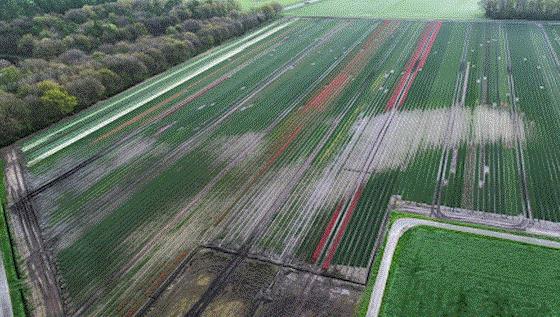
Water damage to tulip fields in the Netherlands.
What’s it mean? Says DeVroomen, “Due to the adverse weather conditions, the industry was only able to source 80% of the required tulip bulbs. What was initially expected to be a 20% shortfall has now grown to around 30%. Acquiring additional bulbs at normal prices is virtually impossible, with prices having doubled or even tripled. This scarcity is likely to pose challenges in the coming seasons as both the quantity and quality of planting material for the next season are reduced.”
The recommendations? Take whatever substitutions you can get because if you delay you won’t even get those. And place your order for NEXT season as early as possible to have the best possible chance at getting what you want.

Postiva fungicide gets California registration
Good news for you Golden State growers: Postiva fungicide from Syngenta has been given the green light for sale and use in your state, giving you a leg up on managing difficult diseases such as Fusarium, leaf spots, Botrytis, powdery mildew and more.
That'll help you in your IPM rotational strategies, too, as Postiva is the first fungicide available to ornamental growers powered by ADEPIDYN technology, which Syngenta says is a next-generation SDHI (succinate dehydrogenase inhibitor) with better, longer-lasting disease control. Postiva combines ADEPIDYN technology and difenoconazole, a DMI (demethylation inhibitor) fungicide, in FRAC Groups 7 and 3, making it a strong weapon against multiple pathogens while helping delay the development of resistance.
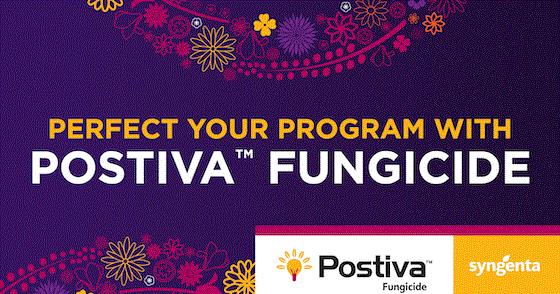
Postiva has also demonstrated strong activity against bacterial pathogens such as Pseudomonas spp. and Xanthomonas spp., broadening the spectrum of control for a complete plant protection treatment.
Postiva can be applied by spray, drench, chemigation or cold fogging to ornamentals, vegetable plants and non-bearing fruit and nut plants grown for retail sales.
Want to give it a try (whether in California or elsewhere where it’s labeled)? You can get additional savings October 1 through December 10 with Syngenta’s GreenTrust 365 Early Order Period discounts.
For trial data and more information about Postiva, visit GreenCastOnline.

Congrats Dr. Liz Felter!
Dr. Liz Felter, long-time Central Florida regional specialized extension agent for the University of Florida’s Institute of Food & Agricultural Sciences (UF/IFAS), has been given the 2024 Gene A. Batson Award by the Florida Nursery, Growers & Landscape Association (FNGLA) Action Chapter—their highest honor!
Liz was presented the award on September 10 at the Action Chapter’s 29th Gene A. Batson Award luncheon in Apopka, Florida, where industry leaders and professionals celebrated her work and achievements.
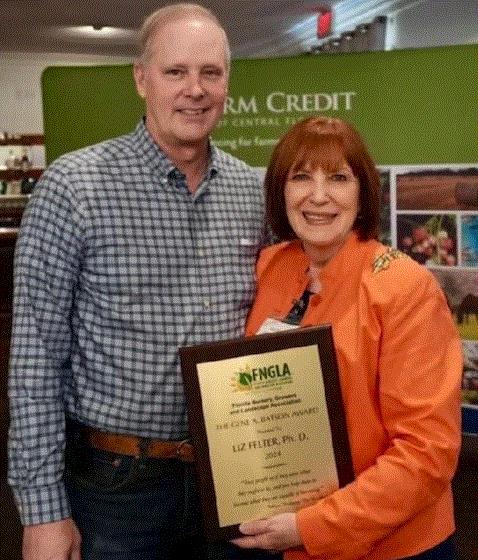
Florida’s Commissioner of Agriculture Wilton Simpson with Dr. Felter.
The Gene A. Batson Award recognizes members who show outstanding leadership and service within the chapter and industry. Liz was selected based on her exceptional contributions to Florida’s horticultural community and dedication to advancing industry practices.
With a career spanning decades, Liz has become a key figure in both the FNGLA’s Action Chapter and Florida’s horticultural sector. She has significantly impacted the field through her extensive work in Extension education, IPM scout training, plant clinic diagnostics, water research and her longstanding involvement with the Mid-Florida Research & Education Center’s plant clinic, one of the state’s longest-continuously running extension programs.
“I’m honored to receive the Gene A. Batson Award,” said Liz. “It is humbling to be recognized by the stakeholders you serve for doing a job that you love.”
Gene Batson was a prominent figure in the Apopka foliage industry, actively involved in improving nursery practices and plant production methods, and his contributions helped position Apopka as a leader in the foliage industry.

Euro Plant Tray honored once again
Euro Plant Tray eG (EPT), the cooperative that formed to solve the German (and European) challenge of reducing one-time-use plastic plant packaging, was awarded the German Innovation Prize for Horticulture by the Federal Ministry of Food and Agriculture at the German Horticultural Congress in Berlin.
The award praises the exemplary nature of the cooperation between the 30 international EPT members and their common goal of developing and introducing the EPT tray as the future horticulture industry standard for reusable plant packaging. Production started several weeks ago and the first EPT trays are already visible to consumers in the stores.
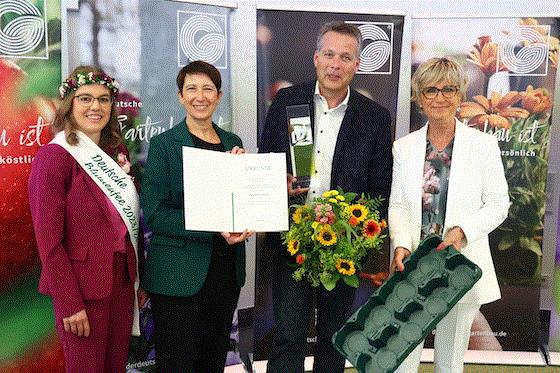
EPT eG’s creation, the Euro Plant Tray, is a multi-pot-size reusable shuttle tray that can be rented in a pool, much like CC Trolleys. Europe is getting strict about one-use plastics and the German plant industry decided to get ahead of the problem. In just a couple of years, the group has designed and produced four EPT models and also developed and implemented operational tasks such as rental contracts, pool management, pool financing, RFID and more.

From the Casual Market
The Casual Market, the place to find the latest trends in patio furniture and accessories, used to be in Chicago and so was I, so it was easy to visit every year. Now the event is in Atlanta, so I have to depend on coverage from Furniture Today magazine.
Which pointed out something interesting: According to an interview with Justin Binnox, VP of outdoor and case goods for furniture manufacturer Century, the delineation of outdoor spaces into “rooms” is trending with today’s consumers—and I take that to mean younger consumers.
“We’re starting to have real conversations about different rooms for outdoor spaces: living rooms, dining, poolside, garden,” he said. “Throughout the industry, the outdoor category is growing; it’s not just one space, but spaces.”
Cool beans! Because every outdoor room is an opportunity to decorate with plants.
Word of the week
I learned a new term from that Furniture Today article: “faux bois”—pronounced foe-bwah. It’s a style that's apparently trending in outdoor furniture.
Defines Wikipedia: “Faux bois (from the French for false wood) refers to the artistic imitation of wood or wood grains in various media. The craft has roots in the Renaissance with trompe-l'œil. It was probably first crafted with concrete using an iron armature by garden craftsmen in France called ‘rocailleurs’ using common iron materials: rods, barrel bands and chicken wire.”
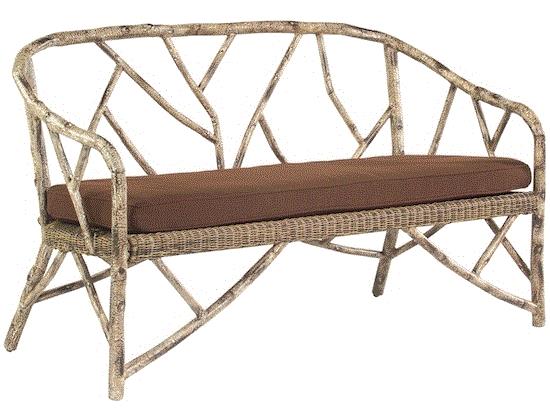
So it’s furniture that looks like sticks and branches, but isn’t. I’ve seen that stuff for years—how did I not know what it was called?
Above is a fine modern example of the vintage style: Woodard’s River Run Faux Bois Birch lodge Loveseat. Just $1,739.50!
Hort school enrollment hits 10-year high, says Seed Your Future
If true, it’s both understandable and gratifying because we’ve been saying for several years now that the younger generations has as strong interest in growing food, saving forests, and even producing hemp and cannabis. So they should be signing up for horticulture programs.
And an enrollment survey conducted by North Carolina State University in collaboration with Seed Your Future indicates that they are. Bachelor’s program enrollment reached a 10-year high in 2021 and nearly half (47%) of universities surveyed in 2024 reported increased enrollment over the past five years. Two-year horticulture programs, which had faced a long period of decline, have also seen an uptick, particularly following the disruptions caused by the COVID pandemic. John Dole, study co-author, noted, “It’s important to recognize that the rise in student numbers began before the pandemic, which further amplified interest in horticulture.”
Co-author Melinda Knuth added, “Looking at historical data helps us strategize for the future. The steady rise in female and Hispanic students over the last decade is promising, and as we move forward, it’s crucial to assess how well we are meeting the diverse needs of all students.”
The study also highlights an encouraging trend at four-year universities: more students are entering horticulture programs directly from high school rather than transferring in, signaling a deeper interest in the field among younger students.
Among bachelor’s degree programs, Colorado State University leads the nation in horticulture enrollment, followed by Cal Poly-San Luis Obispo, Oregon State University, Texas Tech and Washington State University. For associate degrees, Pennsylvania State University had the highest enrollment in 2021, with Michigan State, NC State, Ohio State and the University of Massachusetts rounding out the top five. Regionally, the West boasted the highest number of horticulture students, followed by the South, Midwest and Northeast.
Jazmin Albarran, Director of Seed Your Future, shared her enthusiasm about the growing interest in horticultural careers. Since its founding in 2014, the organization has been committed to raising awareness and inspiring the next generation of horticulture professionals. Jazmin emphasized the need for continued industry engagement to sustain this momentum, noting that Seed Your Future has developed several initiatives aimed at reaching even more students.
Read the full College & University Enrollment Survey Report 2024 HERE.

Three AAS/NGB news items
My former colleague, Diane Blazek, the long-time Executive Director of National Garden Bureau (NGB) and All-America Selections (AAS), has been busy! Here are three news items that have crossed my desk recently:
AAS honors Mitch Hanes with Breeders’ Cup
(AAS) announced that Mitch Hanes, retired flower breeder from Syngenta Flowers, has been selected as the recipient of the 2024 AAS Breeders’ Cup Award. This prestigious award recognizes individuals who have made significant contributions to horticulture through their plant breeding innovations. The AAS judges, a group of experienced horticulturists, honored Mitch with the Breeders’ Cup Award at a special meeting. Todd Perkins, a fellow breeder from Syngenta Flowers, presented a tribute to Mitch’s career, highlighting his exceptional achievements and dedication to the industry.

Mitch spent more than four decades at Syngenta Flowers and Goldsmith Seeds, where he played a pivotal role in breeding a variety of innovative flower cultivars. His contributions to the field of horticulture include the development of interspecific geraniums, such as the Calliope, Caliente and Mojo series. Notably, Calliope Medium Dark Red is a 2017 AAS Winner.
The AAS Breeders’ Cup Award was established in 2004 to honor breeders whose groundbreaking work has led to the development of new cultivars that have had a profound impact on the industry. Mitch's career exemplifies the dedication and expertise required to create exceptional plants that have captivated gardeners and consumers alike.

AAS to host International Plant Trialing Conference in ’25
AAS knows a little bit about flower and plant trials, so it only makes sense that they would revive the International Plant Trialing Conference, an event first held in 2011 in the UK, then in 2013 at Longwood Gardens, then in 2015 in conjunction with the Farwest show. Now, after a decade-long hiatus, this educational event will provide updated information for plant trialers of all levels.

The conference will be held from October 13-15, 2025, at the Embassy Suites Hotel in Bloomington, Minnesota. Planned conference highlights include two days of educational sessions covering a wide range of topics, including ornamentals, edibles, plant trialing techniques and industry trends; general sessions and breakout sessions tailored to both experienced and new plant trailers; expert panel discussions featuring diverse perspectives and insights; and plenty of networking opportunities with industry professionals.
Registration and hotel booking will open on November 1. For more information and updates, go HERE.

Vote for your favorite therapeutic garden (and get them a grant!)
Voting for NGB’s 2024 Therapeutic Garden Grant is now open. Everyone is encouraged to visit the NGB website and vote for the most deserving therapeutic garden based on the videos you can watch HERE.
Started in 2014, the Therapeutic Garden Grant is a philanthropic program of NGB that supports therapeutic gardens across North America. This year, NGB, American Meadows, Ball Horticultural Company and Sakata Seed America are partnering to provide $7,500 in grant money to be split between five therapeutic gardens in North America.
The first-place winner of the online voting will receive $3,000 from the program to enhance the garden’s good works and continue its mission. Second place will receive $1,500 and the three runner ups will receive $1,000 each.
After reviewing all applications submitted for the 2024 Therapeutic Garden Grant, NGB has narrowed the list to five finalists:
City Green Therapeutic Horticulture Program
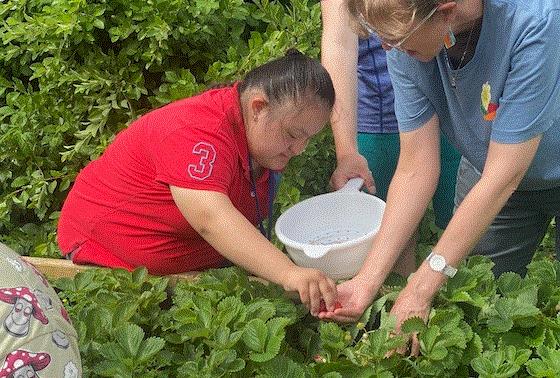
City Green is a 501(c)3 nonprofit farming and gardening organization, based in Clifton, New Jersey. The programs offer practical, technical and financial resources to foster equitable access to local food and green spaces, in support of sustainable, healthy communities.
Gospel Inc. Healing Garden
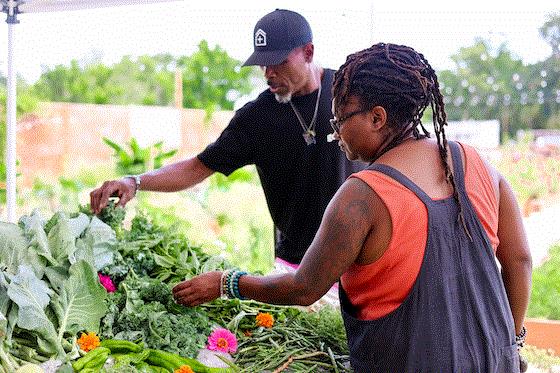
Gospel Inc. is a Christ-centered community in Lakeland, Florida, providing a home and micro-enterprise work opportunity to the formerly homeless at Gospel Village. The “Healing Haven” project aims to create a therapeutic garden designed to promote mental health, physical well-being and community engagement in our local area.
Hope Grows Healing Garden
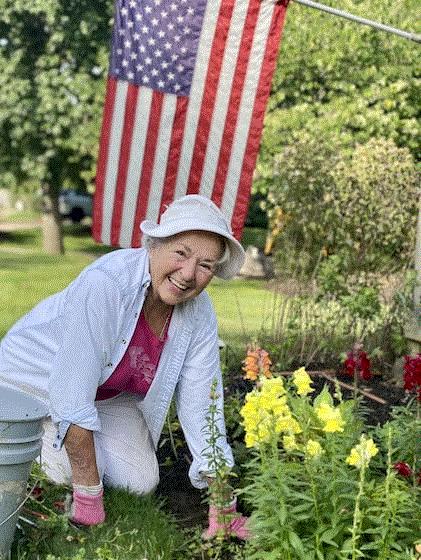
Hope Grows’ mission is to inspire hope through nature while empowering family caregivers to seek wellness of mind, body and spirit. The therapeutic landscapes at the Hope Grows Iris Respite House in Moon Township, Pennsylvania, are designed as havens of tranquility, inspiration, reflection and healing for the invaluable family caregivers in the community.
Frelinghuysen Arboretum Horticultural Therapy Program
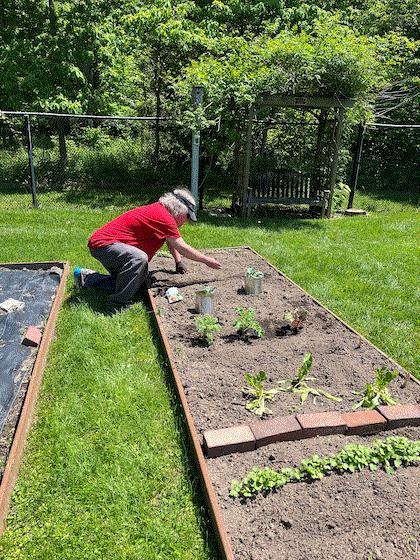
This horticulture therapy garden, located in Morris Township, New Jersey, is a series of raised beds for wheelchair accessibility, plus 24 raised beds for individuals to have their own garden areas. They grow annuals, perennials, vegetables and herbs through several different programs that participants can experience. Interns from local schools help maintain the gardens.
Wayside House The Healing Garden
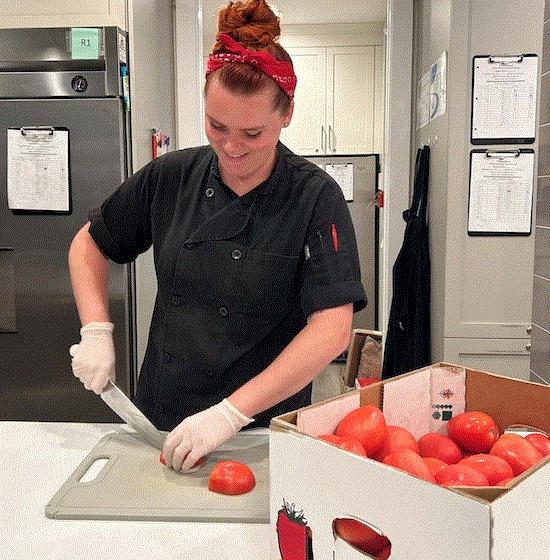
Wayside House, in Delray Beach, Florida, is a women’s addiction treatment center founded 50 years ago by Susan B. Anthony, great-niece of the women’s rights advocate. The garden is an integral part of a full-circle horticulture therapy and nutrition program. The clients grow vegetables, herbs and fruit trees in raised beds as part of their ongoing therapy.
The videos and online voting can be accessed HERE until September 30.

Two additions to Bushel and Berry
Bushel and Berry, the collection of ornamental, edible plants for the home garden from Star Roses and Plants (a division of Ball Horticultural Company), is introducing two new plants for 2025: Brew-Tea-Ful Tea Camellia and Poppin’ Passion Passion Fruit. These plants are the first non-berry additions to the collection. Bushel and Berry previously offered blueberries, blackberries, raspberries and strawberries.
If Brew-Tea-Ful sounds familiar to you, it’s because Ball Ingenuity first introduced it to the trade in 2020 at the California Spring Trials.
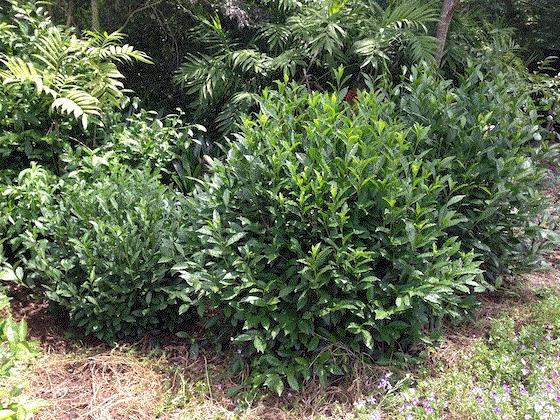
Brew-Tea-Ful Tea Camellia (above) is the first non-fruiting variety available from Bushel and Berry. This camellia produces three types of tea: soothing green tea, rich black tea and aromatic blossom tea, making it easy and affordable for growers to diversify their edible program with just one plant. Brew-Tea-Ful does especially well in warm climates and can be positioned as a unique evergreen hedge. It performs best in Zones 7 to 9.
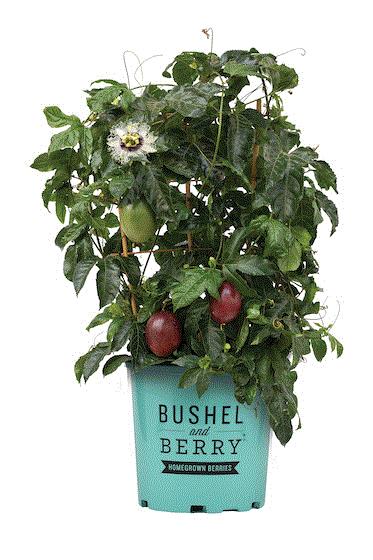 Poppin’ Passion Passion Fruit is a new southern variety for Bushel and Berry that thrives in warm climates and still offers the container-friendly, easy-to-grow attributes you know from the brand. Its flowers are a host for native pollinators, something the modern gardener will love as much as the delicious fruit. It performs best in Zones 9 to 11.
Poppin’ Passion Passion Fruit is a new southern variety for Bushel and Berry that thrives in warm climates and still offers the container-friendly, easy-to-grow attributes you know from the brand. Its flowers are a host for native pollinators, something the modern gardener will love as much as the delicious fruit. It performs best in Zones 9 to 11.
“We want to continue to offer a unique selection of easy-to-grow edible and ornamental plants to Bushel and Berry,” said Kristen Pullen, Woody Ornamental Portfolio Manager at Star Roses and Plants. “These new varieties not only uphold the current brand promise, but expand our offerings into the Deep South and West for a brand that can be stocked in low-chill-hour environments.”

New for 2025 from Monrovia
Not to be outdone, Monrovia has just announced a dozen (at my count) new woodies, edibles, annuals and perennials for the 2025 season. I won’t list them all here (there’s a link below to all), but judging just from the photos my favs are:
Seaside Serenade Pebble Beach Hydrangea with mophead flowers that are dark purple in acidic soil and deep pink in more alkaline soils. Zones 6 to 8.
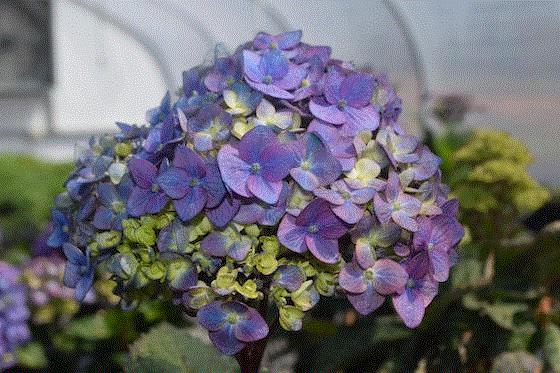
Endless Hellebore with upward-facing flowers that start green and transition to white and are said to be long lasting. Zones 5 to 9
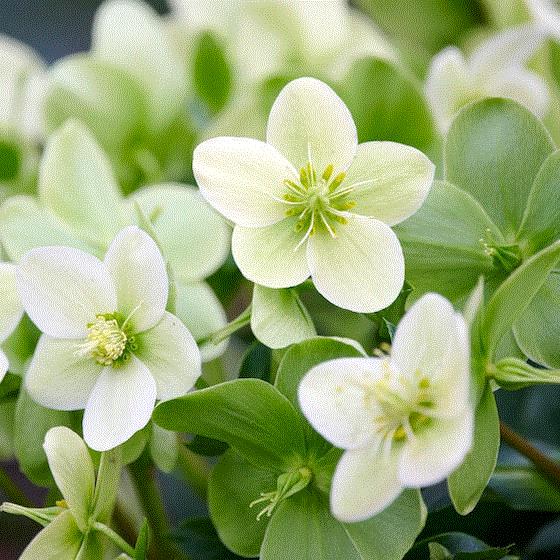
Bountiful Belle and Bountiful Baby Blueberries. Who doesn’t love an edible that’s also ornamental? Belle (Zones 7 to 9) grows to 4-ft. tall and wide, while Baby (Zones 5 to 9) is more hardy and stays more compact. This is Belle's fruit:

Bridal Veil Agapanthus because I love agapanthus lilies in my own garden. Bridal Veil has a compact habit and plenty of bright white flowers. Perennial in Zones 7 to 11 or an annual further north.
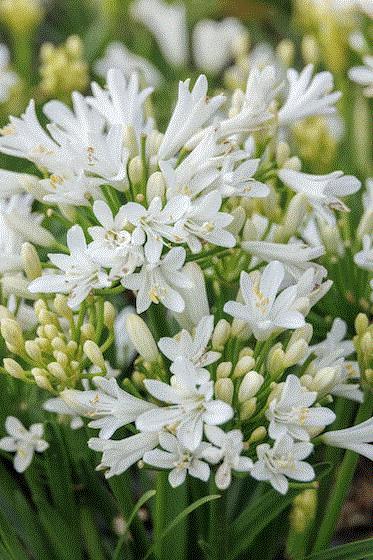
To learn more about these and to see the other eight, watch THIS WEBINAR by the Monrovia experts.

Finally …
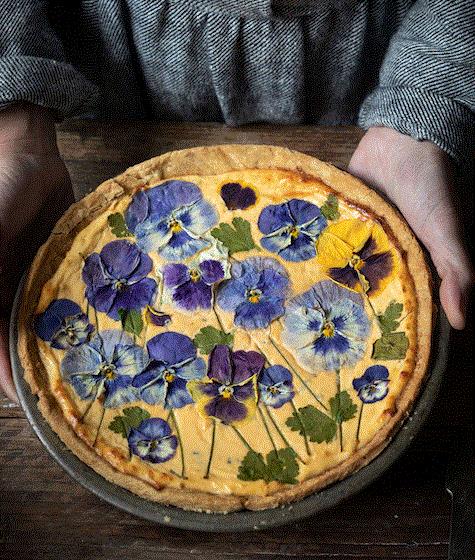
My wife spotted this in Flower Magazine and I had to share it. It’s a savory ricotta and parmesan cheesecake tart that would be perfect for a lunch with industry (or gardening) friends.
I might have to make it—once pansies are in season, that is. Delish!
Feel free to email me at beytes@growertalks.com if you have ideas, comments or questions.
See you next time!

Chris Beytes
Editor-in-Chief
GrowerTalks and Green Profit
This e-mail received by 28,954 loyal readers!
Thanks to my loyal sponsors, who help me reach the 28,891 readers of Acres Online in more than 60 countries. Want to be one of them (a sponsor, that is)? Give Kim Brown a shout and she will tell you about our many advertising opportunities.